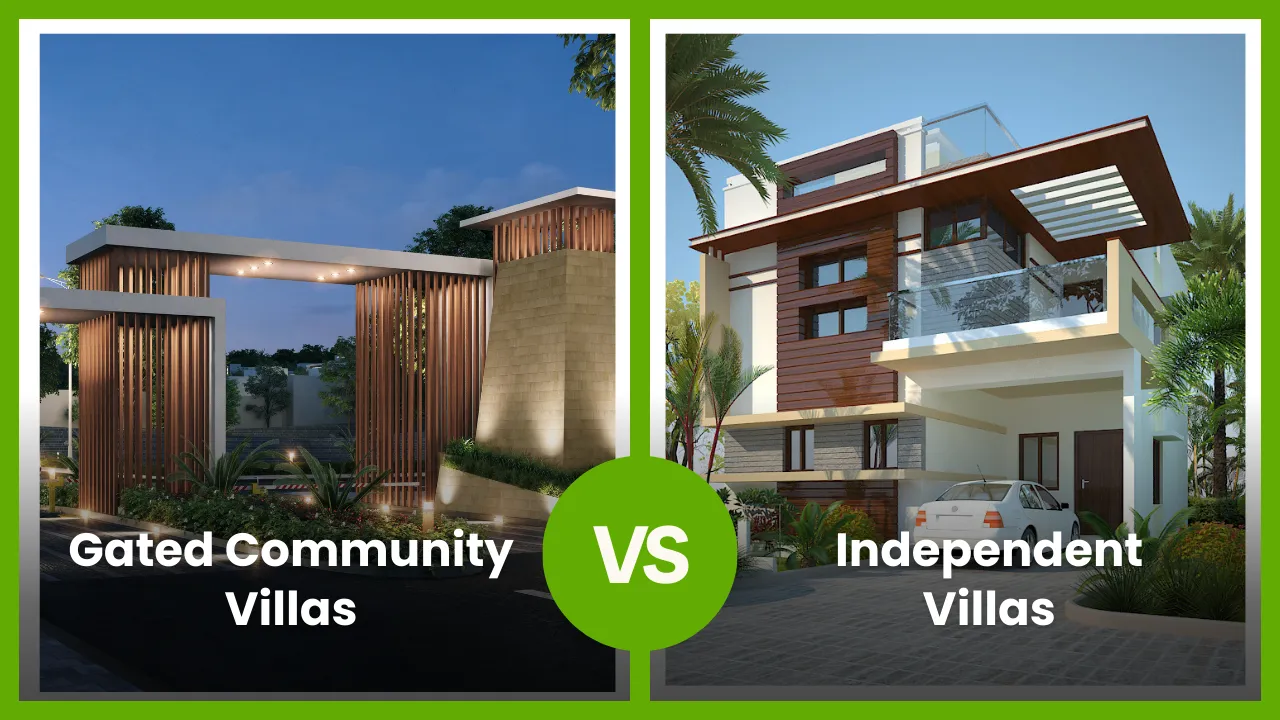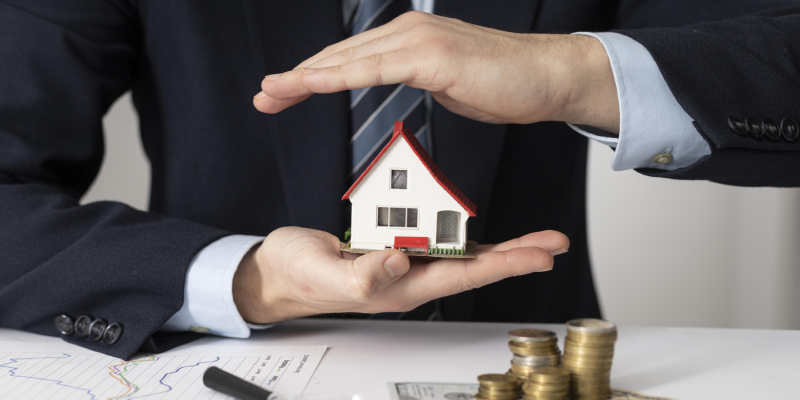The residential construction field is continuously evolving, influenced by advancements in technology, a focus on sustainability, and changing lifestyles. As we explore 2024, several prominent trends in Residential construction are shaping the way homes are created and experienced. From eco-friendly materials to smart home features and health-oriented designs, here’s a straightforward look at what’s new in home construction this year.
Current Top 10 Trends in Residential Construction for 2024
As the best villa construction company, Peninsula Infra is at the forefront of these exciting developments. Let’s explore the latest top 10 Trends in Residential Construction in 2024:
Eco-Friendly Building Materials
Embrace sustainable living with the latest innovations in recycled and biodegradable materials in home construction for 2024.
Growth of Recycled and Reclaimed Resources
The trend towards sustainability is strong in 2024, with builders increasingly opting for recycled and reclaimed materials to lessen their environmental footprint. Materials like reclaimed wood and recycled metal not only help conserve resources but also bring unique character to modern homes.
Advances in Biodegradable Construction Materials
New biodegradable materials are becoming more popular as builders seek greener alternatives. Bioplastics, for instance, are durable yet decompose naturally, making them suitable for various construction uses. This movement indicates a significant industry shift towards reducing carbon footprints and promoting eco-friendly living, which aligns with current trends in residential construction.
Smart Home Features
Discover how artificial intelligence and IoT are enhancing homes with energy-saving solutions and easy automation this year.
AI-Driven Energy Efficiency Solutions
In 2024, smart homes are getting even smarter thanks to AI-driven energy-saving technologies. These systems learn from your routines to optimize energy use, keeping your home comfortable while lowering bills. This reflects the ongoing trends in home construction aimed at creating more efficient living spaces.
IoT Devices for Seamless Home Automation
The Internet of Things (IoT) continues to change residential living by connecting devices for smoother management. Smart thermostats, security systems, and voice-controlled assistants are becoming standard in modern homes, enhancing convenience and security for homeowners. These features exemplify the trends in residential construction focused on integrating technology into everyday life.
Modular and Prefab Homes
Explore the customizable, budget-friendly homes that are gaining traction for their design flexibility in 2024.
Customization Opportunities and Design Versatility
Modular and prefab homes are rising in popularity due to their customizable designs. Homebuyers can select from various layouts and styles, creating a home that fits their needs and budget. Additionally, off-site construction allows for quicker completion times, aligning with the current trends in home construction.
Rapid Construction and Cost Savings
One of the main advantages of modular homes is their speed and cost efficiency. Built in controlled environments, these homes can be completed faster, reducing delays and saving money for both homeowners and builders—another key aspect of trends in residential construction in 2024.
Energy-Conserving Designs
Explore energy-efficient designs that include solar energy and green roofs for sustainable living.
Principles of Passive House Design
Energy-efficient designs based on passive house principles are gaining attention as homeowners strive to minimize energy use. Features like superior insulation and energy-efficient windows help maintain comfortable indoor temperatures while reducing energy bills. This focus on efficiency is one of the prominent trends in home construction.
Integration of Solar Panels and Green Roofs
Using renewable energy like solar panels is becoming commonplace in home construction. Solar panels convert sunlight into electricity, providing homeowners with a sustainable and cost-effective energy source. Green roofs, filled with vegetation, enhance insulation and air quality, contributing to eco-friendly living, another reflection of the trends in residential construction.
Wellness-Focused and Health-Conscious Spaces
Enhance your well-being with homes designed with advanced air quality systems and natural elements in 2024.
Advanced Indoor Air Quality Systems
Designs that focus on wellness are prioritizing clean air within homes. Modern HVAC systems equipped with filtration technology help remove allergens and pollutants, fostering a healthier living environment. This aligns with emerging trends in home construction that prioritize occupant health.
Natural Design Features
In 2024, biophilic design—which integrates natural elements—is becoming a key aspect of residential spaces. Large windows for natural light, indoor plants, and materials like wood and stone create soothing environments that enhance mood and well-being, reflecting the latest trends in residential construction.
Flexible Spaces and Home Offices
Adapt to the rise of remote work with versatile home layouts that prioritize comfort and productivity.
Versatile Spaces for Remote Work
With remote work on the rise, flexible spaces are essential. Home offices or multi-use areas that can transform into workspaces are becoming standard, providing privacy and focus—another response to current trends in home construction.
Importance of Privacy and Sound Control
Privacy and sound control are vital in modern home designs. Using soundproofing methods and thoughtful layouts helps ensure peaceful living conditions, further emphasizing the importance of adapting to trends in residential construction.
Advanced Security Features
Ensure your peace of mind with sophisticated access and monitoring systems that enhance safety at home.
Biometric Security Systems
High-tech security solutions are advancing in home construction, offering systems like fingerprint scanners and facial recognition for secure access. These features ensure that only authorized individuals can enter your home, showcasing the innovative trends in residential construction.
Enhanced Surveillance and Monitoring
Modern home security now includes advanced cameras and motion sensors, allowing homeowners to keep an eye on their property from anywhere using mobile devices. Integrated with smart home systems, these features provide real-time alerts for suspicious activities, enhancing safety and reflecting the trends in home construction.
Solutions for Multi-Generational Living
Encourage family unity while ensuring privacy with homes designed for various generational needs.
Separate Living Spaces with Communal Areas
Homes designed for multi-generational living are gaining popularity, accommodating different family dynamics under one roof. With private suites and shared spaces, families can enjoy togetherness while maintaining personal space, and adapting to the latest trends in residential construction.
Features for Accessibility and Inclusivity
Accessibility is crucial in contemporary home designs. Features like wheelchair-accessible entrances and lever-style door handles ensure homes are welcoming and safe for everyone, aligning with the inclusive trends in home construction.
Urban Agriculture and Green Areas
Promote sustainability with rooftop gardens and community green spaces enhancing urban living.
Rooftop Gardens and Vertical Planting
Urban farming is changing rooftops into productive spaces where residents can grow their own food, supporting sustainability and improving air quality. This aligns with the growing trends in home construction focused on green living.
Community Green Spaces and Eco-Friendly Landscaping
Community gardens encourage residents to engage and collaborate while practicing environmental stewardship. These shared areas foster a sense of community and biodiversity, echoing the important trends in home construction we see today.
Resilient Building Practices
Prepare for the future with designs that protect homes against floods and fires in 2024.
Flood-Resistant Materials and Designs
With climate change concerns, builders are implementing flood-resistant materials and strategies to safeguard homes. Elevated structures and improved drainage systems help reduce flood risks, demonstrating the proactive trends in home construction.
Fire-Resistant Building Techniques
Safety is essential in modern home design. Fire-resistant materials and strategies help protect homes and residents, ensuring safety in fire-prone areas and supporting the current trends in home construction.
Conclusion
As we move through 2024, the trends in residential construction highlight a commitment to sustainability, technology, and wellness. From eco-friendly materials and smart home innovations to adaptable living spaces, these developments reflect a dedication to creating homes that improve comfort and quality of life. At Peninsula Infra, we strive to build homes that meet today’s needs and anticipate future challenges.
If you’re ready to discover your dream home or want to learn more about our projects, contact us at +91 90089 88555. Let’s work together to build a brighter future!
FAQs
What are the advantages of using eco-friendly building materials?
Eco-friendly materials significantly reduce environmental impact, promote resource conservation, and often enhance aesthetic appeal. They align with current trends in construction, contributing to healthier living spaces and supporting sustainable practices in community development.
How can smart home technologies improve living conditions?
Smart home technologies optimize energy efficiency, enhance security, and improve convenience. They reflect the latest trends in construction by providing automated systems that learn from homeowners’ behaviours, resulting in reduced energy bills and increased comfort.
Why are modular homes becoming more popular in 2024?
Modular homes offer numerous benefits, including customization options, cost efficiency, and faster construction times. Their design aligns with trends, reducing delays and labor shortages, appealling to homeowners and developers seeking efficient housing solutions.
What challenges come with retrofitting existing homes for energy efficiency?
Retrofitting existing homes can pose challenges due to structural limitations, high costs, and complexities of integrating new technologies. Homeowners often face additional hurdles in making significant upgrades while maintaining aesthetic and functional aspects of their properties.
How do multi-generational living solutions benefit families in urban areas?
Multi-generational living solutions foster family connections by providing shared communal spaces while ensuring privacy. They support diverse household dynamics, accommodating varying living preferences and needs, ultimately enhancing family unity and well-being within urban environments.




